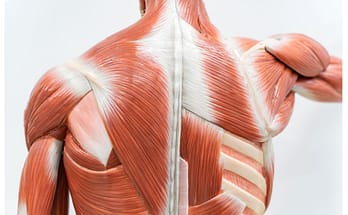Are you constantly craning your neck? Whether it is from staring at a screen, carrying a heavy purse, or trying to see something over someone else’s shoulder, the constant strain on your neck can lead to pain, injury, and even chronic conditions.
In fact, research shows that approximately 70% of adults experience neck pain at some point in their lives, and many of these cases are caused by poor posture and prolonged use of technology. But it’s not just physical pain you have to worry about; craning your neck can also lead to headaches, shoulder pain, and decreased mobility.
Moreover, the long-term effects of craning your neck could be severe if not treated, leading to chronic headaches, nerve damage, and even spinal cord compression.
But don’t despair. There are things you can do to prevent and even fix your craning neck.
In this blog post, we’ll explore the risks of craning your neck, the causes of poor posture and tech neck, and provide solutions and exercises to help you fix and prevent it from happening again.
So, don’t let craning your neck ruin your life. Keep reading to learn more and take control of your neck health today!
Key Takeaways
- Craning your neck can lead to serious long-term consequences such as chronic pain, headaches, nerve damage, and spinal cord compression.
- Poor posture, carrying a heavy purse or backpack, unmanaged stress, and prolonged use of technology devices are some major causes of neck pain and craning.
- Incorporating exercises to prevent craning your neck into your daily routine and addressing neck pain early on is important to prevent it from becoming a chronic problem.
Poor Posture
Poor posture can lead to a host of problems, including neck pain and craning of the neck. You put unnecessary strain on your neck and spine when you slouch, hunch over, or otherwise fail to maintain good posture.
If left unchecked, poor posture can lead to pain, stiffness, and even chronic conditions.
According to research, poor posture is one of the leading causes of neck pain, with as much as 86% of people experiencing neck pain due to poor posture at some point in their lives.
Here are a few tips to improve your posture and prevent neck pain:
- Stand up straight! It sounds simple, but standing tall can make a big difference in your posture.
- Keep your shoulders back and down. Slouching can cause your shoulders to round forward, leading to poor posture.
- Keep your head level. When looking at a screen or reading a book, keep your head level rather than tilting it down.
- Incorporate specific exercises to improve your posture like shoulder blade squeezes, neck retraction, and upper back stretches.
Carrying a Heavy Purse or Backpack
Carrying a heavy purse or backpack can also contribute to neck pain and craning. When you carry a heavy load on one side of your body, it can cause your shoulders to tilt and your spine to curve, leading to poor posture and tension in the neck.
Studies have shown that carrying a heavy backpack can lead to an increase in neck and shoulder pain, as well as headaches.
To reduce the strain of carrying a heavy purse or backpack, try one or more of these tips:
- Lighten your load. The less you carry, the less strain on your neck.
- Distribute the weight evenly. The best way to avoid neck pain is by distributing the weight evenly over both shoulders.
- Take frequent breaks. If you’re walking with a heavy load for an extended period, stop periodically to rest your neck muscles.
Unmanaged Stress
Stress also contributes to neck pain and craning of the neck. When you’re feeling stressed, your body goes into fight-or-flight mode, which can cause muscle tension in the neck and shoulders. And if this tension is not managed, it can lead to chronic pain and craning of the neck.
According to a study, nearly 80% of people experience neck pain due to stress.
To reduce the risk of neck pain from stress, try the following:
- Practice stress-relieving activities like yoga, meditation, or exercise.
- Take a break. If you’re feeling stressed, take a step back and take a break.
- Get a massage. A massage can help relax the muscles in your neck and shoulders, reducing tension and pain.
- Keep a journal. Writing down your thoughts and feelings can help you better understand your stressors.
- Talk to someone. Whether it’s a friend, family member, or therapist, talking to someone can help you work through your stress and find solutions.
Tech Neck
Technology devices such as mobile devices and laptops have made our lives more comfortable and convenient, but they’ve put our necks at risk.
The term ‘tech neck’ describes the pain and discomfort caused by prolonged use of these devices. It occurs when you are looking down to view these technologies, leading to a forward head posture and increased pressure on the neck, which can lead to chronic pain, headaches, and even changes to the spine.
According to a recent study, an average person spends almost 5 hours daily on their smartphones, which has increased the number of people suffering from tech neck.
To avoid Tech Neck, be aware of your posture when using technology. Keep the device at eye level or slightly below, take frequent breaks, and stretch to relieve tension after you’re done.
Forward Head Posture
Poor posture, muscle imbalances, and prolonged use of technology devices cause forward head posture. It can lead to chronic pain and headaches, as well as changes to the spine.
To correct forward head posture, you should address the underlying causes of your posture problem. That could include practicing good posture, strengthening your neck and back muscles, and doing exercises targeting your neck and shoulders. Additionally, making changes to your workstation and device setup can also help.
How to Fix Forward Head Posture
Use One Firm Pillow: When you sleep, one firm pillow can help keep your head and neck in a neutral position, reducing the strain on your neck.
Make your Work Station Ergonomic: Adjust your chair, computer monitor, and keyboard to ease the strain on your neck when working.
Start a “Nerd Neck” Exercise Routine: Incorporating exercises that target the neck, shoulders, and upper back can help to strengthen the muscles and improve posture.
Adjust your Backpack: When you carry a backpack, make sure to adjust the straps so that the weight is evenly distributed and the backpack is not too high or low on your back.
Avoiding Text Neck
Text neck is a term that describes the pain and discomfort caused by prolonged use of technology devices such as smartphones, tablets, and laptops. The condition occurs when the head is tilted to view the device, resulting in a forward head posture and increased pressure on the neck, and it can lead to chronic pain, headaches, and even changes to the spine.
But don’t worry. There are things you can do to prevent text neck and keep your neck healthy.
Symptoms of text neck include pain and stiffness in the neck, shoulders, and upper back, as well as headaches and tingling in the arms. To avoid text neck, keep your device at eye level or slightly below you while using it and take frequent breaks. Stretching your neck, shoulders, and back will also help when you are done.
Can Chiropractors Help Treat Nerd Neck?
Chiropractors can help treat nerd neck by adjusting the spine, relieving muscle tension, and providing exercises to help improve posture and prevent future problems. They can also offer guidance on ergonomics and lifestyle changes that can help prevent neck pain.
Don’t Crane Your Neck!
Awareness of when you are in these positions is key to preventing these injuries. Remember to take breaks and stretch when using technology devices, keep your head level, and maintain good posture. With these simple tips, you can reduce your risk of neck pain and craning your neck.
Long-term Effects of Craning Your Neck
Craning your neck may seem like a minor inconvenience, but if left untreated, it can lead to serious long-term consequences. These include chronic pain, headaches, nerve damage, and spinal cord compression. It can also lead to decreased mobility and a decreased quality of life. That’s why it’s crucial to address neck pain early on and take steps to prevent it from becoming a chronic problem.
Exercises to Prevent Craning Your Neck
Exercise is an essential part of preventing craning your neck and improving posture. Here are a few exercises to try:
- Shoulder blade squeezes: Sit or stand tall and squeeze your shoulder blades together. Hold for 5 seconds, then release. Repeat 10 times.
- Neck retraction: Sit or stand tall and gently tuck your chin in, making a double chin. Hold for 5 seconds, then release. Repeat 10 times.
- Upper back stretches: Interlace your fingers behind your head and gently pull your elbows back. Hold for 5 seconds, then release. Repeat 10 times.
Wrap-up
Craning your neck can be caused by various factors, but it is preventable. By being mindful of your posture, managing stress, and changing your workstation and device setup, you can reduce your risk of neck pain and craning. Remember, taking control of your neck health today is crucial to avoid long-term consequences. Don’t let craning your neck ruin your life. If your neck pain persists, seek professional help and book an appointment with a chiropractor today to start living a pain-free life.
FAQ
Q: Is text neck reversible?
A: Yes, text neck is reversible with proper posture and exercises.
Q: How can I tell if I have forward head posture?
A: Forward head posture can be identified by a protruding head and rounded shoulders. A professional can also assess your posture and determine if you have forward head posture.
Q: How often should I do exercises to prevent craning my neck?
A: Incorporating exercises to prevent craning your neck into your daily routine is best. Aim to do these exercises at least 3-4 times a week.




